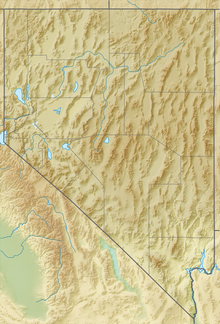
Chalcopyrite ( KAL-ko-PY-ryt) is a copper iron sulfide mineral that crystallizes in the tetragonal system. It has the chemical formula CuFeS2. It has a brassy to golden yellow color and a hardness of 3.5 to 4 on the Mohs scale. Its streak is diagnostic as green tinged black.

Bornite, also known as peacock ore, is a sulfide mineral with chemical composition Cu5FeS4 that crystallizes in the orthorhombic system (pseudo-cubic).

Cuprite is an oxide mineral composed of copper(I) oxide Cu2O, and is a minor ore of copper.

Chrysocolla is a hydrated copper phyllosilicate mineral with formula Cu
2–xAl
x{H
2–xSi
2O
5)(OH)
4•nH
2O (x<1) or (Cu,Al)
2H
2Si
2O
5(OH)
4•nH
2O). The structure of the mineral has been questioned, as spectrographic studies suggest material identified as chrysocolla may be a mixture of the copper hydroxide spertiniite and chalcedony.

Atacamite is a copper halide mineral: a copper(II) chloride hydroxide with formula Cu2Cl(OH)3. It was first described for deposits in the Atacama Desert of Chile in 1801 by D. de Fallizen. The Atacama Desert is also the namesake of the mineral.
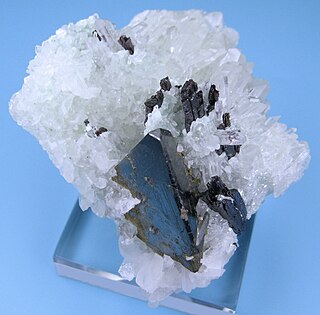
Tetrahedrite is a copper antimony sulfosalt mineral with formula: (Cu,Fe)
12Sb
4S
13. It is the antimony endmember of the continuous solid solution series with arsenic-bearing tennantite. Pure endmembers of the series are seldom if ever seen in nature. Of the two, the antimony rich phase is more common. Other elements also substitute in the structure, most notably iron and zinc, along with less common silver, mercury and lead. Bismuth also substitutes for the antimony site and bismuthian tetrahedrite or annivite is a recognized variety. The related, silver dominant, mineral species freibergite, although rare, is notable in that it can contain up to 18% silver.

Tenorite is a copper oxide mineral with the chemical formula CuO.
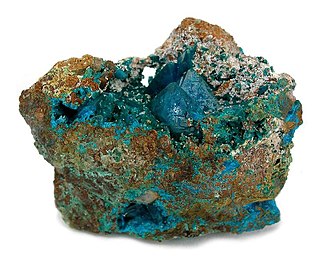
Liroconite is a complex mineral: Hydrated copper aluminium arsenate hydroxide, with the formula Cu2Al[(OH)4|AsO4]·4(H2O). It is a vitreous monoclinic mineral, colored bright blue to green, often associated with malachite, azurite, olivenite, and clinoclase. It is quite soft, with a Mohs hardness of 2 - 2.5, and has a specific gravity of 2.9 - 3.0.
Condurrite is a name given to a mixture of cuprite, domeykite and tenorite. It takes its name from the Great Condurrow Mine at Troon, Cornwall in the United Kingdom, which is regarded as the type locality.
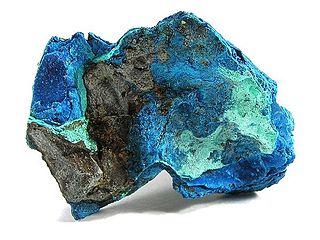
Connellite is a rare mineral species, a hydrous copper chloro-sulfate, Cu19(OH)32(SO4)Cl4·3H2O, crystallizing in the hexagonal system. It occurs as tufts of very delicate acicular crystals of a fine blue color, and is associated with other copper minerals of secondary origin, such as cuprite and malachite. Its occurrence in Cornwall, England, was noted by Philip Rashleigh in 1802, and it was first examined chemically by Prof Arthur Connell FRSE in 1847, after whom it is named.
Buddingtonite is an ammonium feldspar with formula: NH4AlSi3O8 (note: some sources add 0.5H2O to the formula). It forms by hydrothermal alteration of primary feldspar minerals. It is an indicator of possible gold and silver deposits, as they can become concentrated by hydrothermal processes. It crystallizes in the monoclinic crystal system and is colorless to white with a vitreous luster. Its structure is analogous to that of high sanidine (KAlSi3O8). Buddingtonite has a hardness of 5.5 and a specific gravity of 2.32.

Hamju County is a county in South Hamgyong province, North Korea.
The Seminoe Mountains greenstone belt represents a fragment of an Archean greenstone terrane within the Wyoming craton. The greenstone belt was mapped by Hausel, who identified significant gold anomalies at Bradley Peak in banded iron formation, quartz veins and in a large altered zone of metabasalts. Mapping differentiated three mappable units that included the Bradley Peak metavolcanics, the Seminoe Formation and the Sunday Morning metasediments.
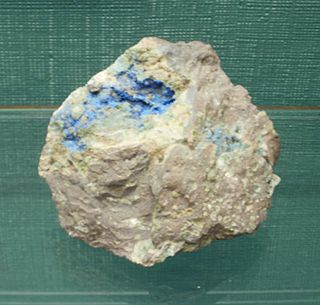
Calumetite is a natural rarely occurring mineral. It was discovered in 1963 at the Centennial Mine near Calumet, Michigan, United States. Calumetite was first discovered along with anthonyite. It has a chemical formula of Cu(OH,Cl)
2•2(H
2O).

Anthonyite is a hydrous secondary copper halide mineral with chemical formula of Cu(OH,Cl)2•3(H2O).

Namibia, formerly known as South West Africa and German South West Africa, has a long history of postal services, starting in 1814 with postal runners delivering messages among mission stations. The first stamps were printed during the German colonial period. Currently NamPost is responsible for running postal services, managing 135 postal offices in the country.

Postage stamps were issued in the South African-administered colony of South West Africa from 1914 to 1989.

Cape d'Or is a headland located near Advocate, Cumberland County, on the Bay of Fundy coast of the Canadian province of Nova Scotia.

Marshite (CuI) is a naturally occurring isometric halide mineral with occasional silver (Ag) substitution for copper (Cu). Solid solution between the silver end-member miersite and the copper end-member marshite has been found in these minerals from deposits in Broken Hill, Australia. The mineral’s name is derived from the person who first described it, an Australian mineral collector named Charles W. Marsh. Marsh drew attention to native copper iodide (Marshite) in the 1800s emphasizing its natural occurrence, it is not to be confused with copper (I) iodide a substance commonly synthesized in laboratory settings.
Teineite is a tellurite mineral with the formula Cu(TeO3). 2 H2O. It has a Moh's hardness of 2.5 and it comes in many different shades of blue, ranging from cerulean blue to bluish-gray. The mineral millsite has the same chemical composition, but crystallizes in the monoclinic system, while teineite crystallizes in the orthorhombic system.
